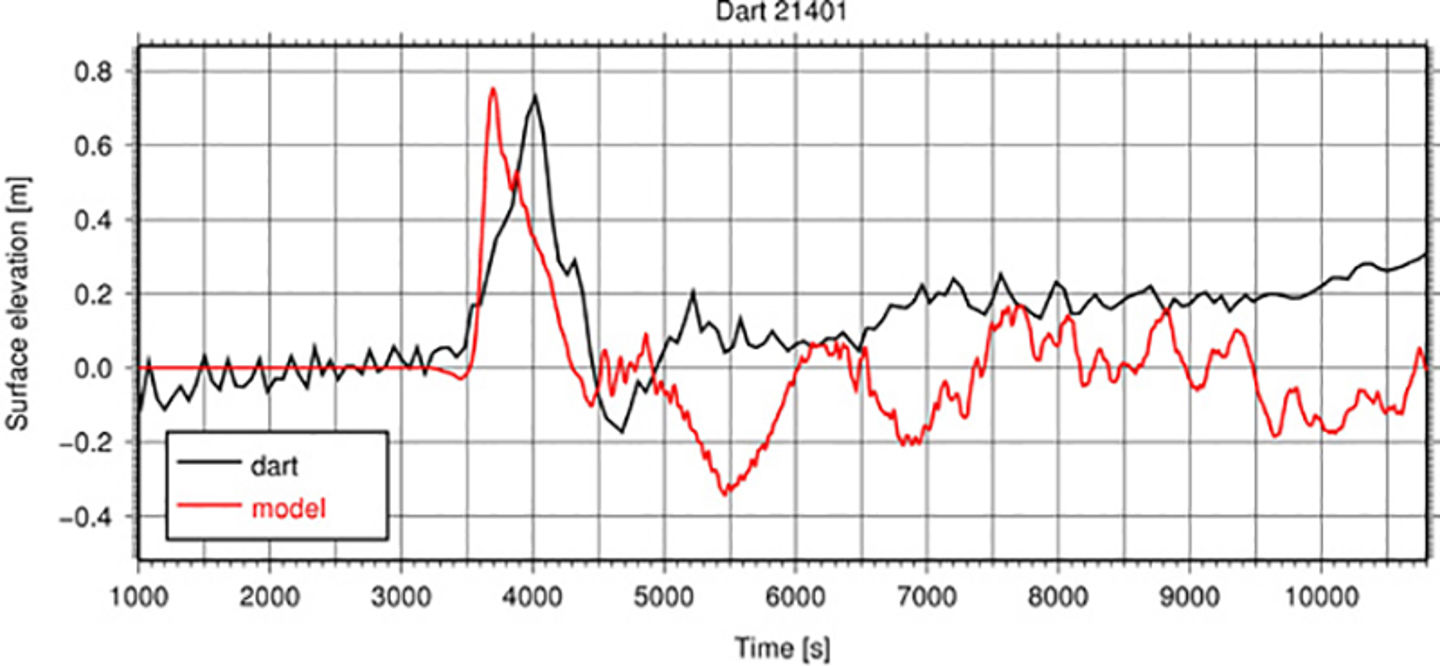- NGI /
- Projects /
- RAPSODI - tsunami risk resilience /
- Numerical and hydraulic modeling
Numerical and hydraulic modeling
The development of the tsunami risk assessment model includes the application and validation of numerical models.

Small-scale hydraulic model tests will also be performed in either two-dimensional flumes or three-dimensional basins, depending on the geometry of the problem.
Numerical modeling
The numerical models applied in the project will be used to derive the tsunami current velocity hitting assets that might fail due to the impacts. These models are NAMI DANCE, MOST/GloBouss, and Geoclaw, developed by the RAPSODI partners or available from close collaborators.

To investigate the impact on structures and buildings, improved roughness information (incl. the so-called large roughnesses) must be integrated with the numerical models and calibrated from field data.
The outcome will be new modules in the numerical models that can model the tsunami flow and provide relevant input to any other models being used or developed in RAPSODI. Relevant input would include flow depth, current velocity, flux, and tsunami travel time. This will enable analysis for investigation of:
- the impact on structures and buildings
- structural, socio-economic, and ecological vulnerability models
- a model to assess the overall risk
Hydraulic modeling
The impact of tsunamis on assets is believed to be best investigated by small-scale hydraulic model tests in either two-dimensional flumes or three-dimensional basins, depending on the geometry of the problem.

Hydraulic tests on wave attenuation by artificial mangroves, at TU Braunschweig (TU-BS)
Hence, the results from the Field data and literature review, a matrix with different types of structures and buildings, including surrounding ground conditions listed against potential failure modes and a list of available models and techniques to design for any of these combinations, will be used to select specific types of structures and to investigate impacts on these structures leading to any of the aforementioned failure modes.
A systematic investigation will be performed, especially in matrix areas with poor information. The outcome of this research will be a novel description of the mechanisms with which many structures and buildings may fail under tsunami impact.
Contacts
- Yoshiyuki Nakamura, Sub-project Manager, nakamura-y@ynu.ac.jp
- Andreas Kortenhaus, Position, Sub-project Manager,
a.kortenhaus@tu-bs.de, Phone: +0531 391-3981 - Agnieszka Strusinska-Correia, Sub-project Manager,
a.strusinska@tu-bs.de, Phone:+49 531 391-3966 - Carl Bonnevie Harbitz

Carl Bonnevie Harbitz
Technical Expert Climate Adaptation and Hydrodynamics carl.bonnevie.harbitz@ngi.no+47 922 39 636